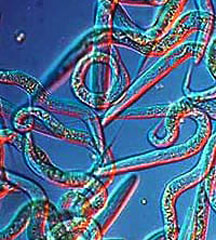
C. elegans is a powerful model system for studying genetics, development, and neurobiology. The Phillips lab has helped pioneer the use of this species for evolutionary studies, particularly for experimental evolution. We are expanding this work into the molecular population genomic analysis of the closely related species, C. remanei, which has much more genetic variation.
- pphil@uoregon.edu
- 5289 University of Oregon
- Eugene, OR 97403-1210
- © 2024

